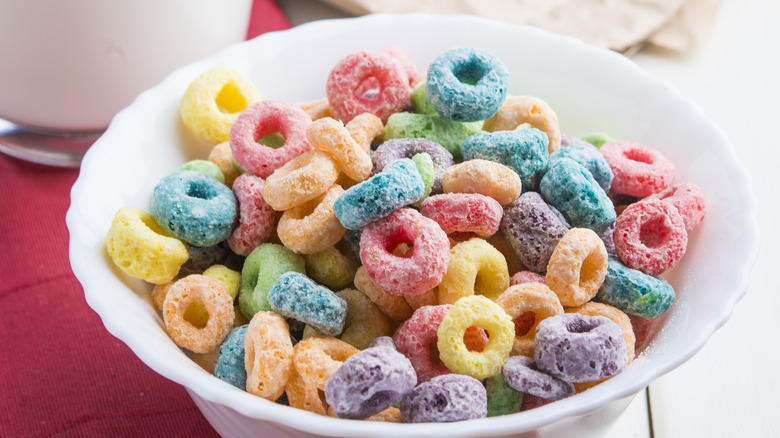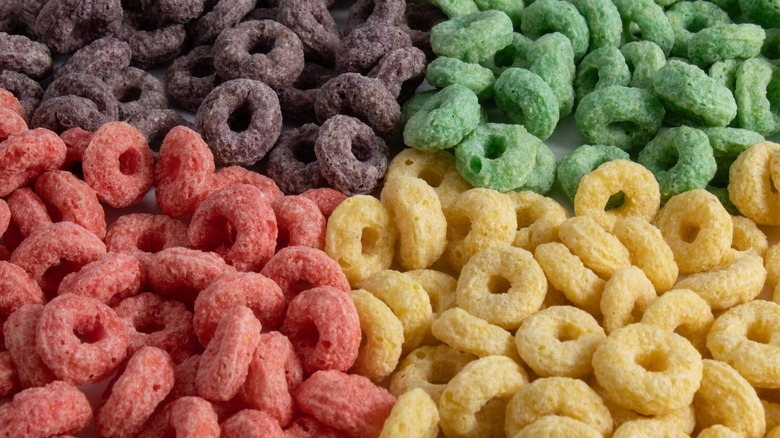Froot Loops All Taste The Same, But They're Made With Multiple Flavors
For some people, the mere mention of Froot Loops has the potential to bring up nostalgic memories. Whether that be simply slurping up big spoonfuls of the colorful cereal and subsequently dyed milk as a kid or crafting a stylish Fruit loop necklace, it's possible you, too, were under the conclusion that each color of Froot Loop came with a unique flavor. However, we're here to deliver the news that on the contrary, Froot Loops are actually all made with the same blend of "frooty" flavors, regardless of what color they are.
When you take a bite of Froot Loops, you'll taste a blend of many fruit-like flavors, including those that bring to mind hints of citrus, apple, and berries. In addition to that, each loop also contains the predominant corn and oat flavors that make up the cereal's base, resulting in that quintessential Froot Loops taste. Though popular belief might have led you to believe that sorting the cereal into color-coordinated piles was the right way to go, the nostalgic practice is ultimately more aesthetic than related to taste.
Kellogg's designed the cereal to taste, well, frooty
Of course, you should always read the label on the cereal box to inform your choices before picking one up for the week's breakfast. If you look at the ingredients on the nutrition facts panel on Froot Loops, you'll see that there's actually no whole fruit or fruit juice listed in the classic Kellogg's cereal.
Though Froot Loops are made with artificial colors, it does appear that natural flavors are used to make the loops taste "frooty," yet like no one fruit in particular. According to the FDA, a natural flavor or flavoring is one derived from an essence or extract of a naturally occurring edible food, including but not limited to a fruit, vegetable, or root. The exact source of those natural flavors is often kept undisclosed on the label, and it's common to see companies just list "natural flavor" as an ingredient, keeping their proprietary blends secret in the process. So unfortunately, there's not really a way to know exactly what gives this cereal its iconic taste.
Perform your own taste test to see for yourself
If your inner child is still not convinced that the blue and yellow cereal loops taste the same, why not use your curiosity as an excuse to pick up a box and see for yourself? Consumer packaged goods companies tend to develop their products with the help of trained sensory panels made up of people who are skilled at detecting flavor differences. Though the truth about each Froot Loops piece containing the same blend of natural flavoring is now fairly well-known — Kellogg's has supposedly confirmed it — your tastebuds can help you verify this for yourself.
There is evidence that the color of certain foods can influence our perception of how they taste. In this case, cereal color could have our tongues' sensory receptors conjuring up certain fruity flavor associations. This could be especially true considering the artificially vibrant and bold colors used to make Froot Loops (though there are versions of the cereal that feature softer natural colors).
It's also important to note that we're talking strictly about the iconic Froot Loops brand. This uniformity of flavor may not be the case when it comes to private-label imitation cereals — they might flavor each loop differently. But when it comes to the mainstream brand, the color is ultimately just for kicks.


